Dolby Brings Both the Audio and Visual Awe with Technical Wonder 'Escape'
Imogen Heap and kings of branded content, Moonbot Studios, used the latest Dolby HDR and object-based sound tech in their short film.
As a part of Tribeca Film Festival's masterclass series, Dolby presented a short film they recently finished in partnership with Moonbot studios (the guys behind that Chipotle commercial). Escape is a spiritual sequel to their first collaboration in 2010, Silent, which was created to display the new Dolby Atmos system. Now, Dolby has stepped up their imaging game as well with Dolby Vision, and the two technologies are combined in this new film.
Dolby calls the film "a cinematic poem about the world-changing power of invention." It stars a teenage heroine stranded on an unknown planet, relying on her ingenuity (and a really cool tuning-fork staff) to save her.
Singer Imogen Heap joined the team as a composer. Heap, along with the filmmakers, Brandon Oldenberg and Limbert Fabian; their sound designer Nick Ryan; and their producer Angus McGilpin (who is also Senior Director of Content Development at Dolby Laboratories) discussed the film after its premiere. Glenn Kiser, Director of the Dolby Institute, moderated.
What are Dolby Atmos and Dolby Vision?
McGilpin kicked off the panel by giving a brief rundown of what exactly Dolby Atmos and Dolby Vision are. "Dolby Vision is a high dynamic range technology," McGilpin explained. "There's a special projector that allows filmmakers to use a much wider color gamut, they have the brightest brights and the darkest darks. It's really an amazing process that we've been able to introduce into the cinemas." For example, he said, "the color of the crystal—that's a red that you can't reproduce with a regular digital cinema projector. We wanted to do subtle things like that to really show the technology off and surprise the audience."
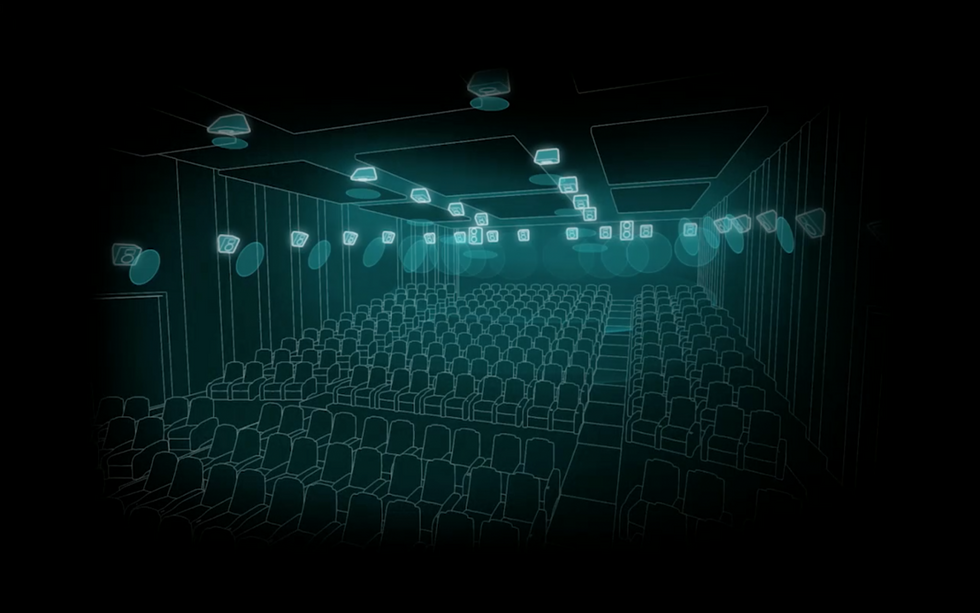
The Moonbot duo had uber-technical aspirations for their film
Oldenburg and Fabian had worked in Atmos for the first time in 2014, but they were new to Dolby Vision. Kiser asked about their experience with the system.
"It's not every day where you start a story wanting to check some boxes. But for us we found [the new technology] to be a creative challenge." Oldenburg listed the ways they tried to exploit the expanded color space. "One goal was to take full advantage of the darkest darks, the other was to take full advantage of the colors that you can get." Hitting these technical benchmarks influenced their story-writing.
"We wanted to find a place where we could go to see the blacks, maybe in a dark cave," Oldenburg continued, "and a place where we can have a gemstone glow in a force of tonality."
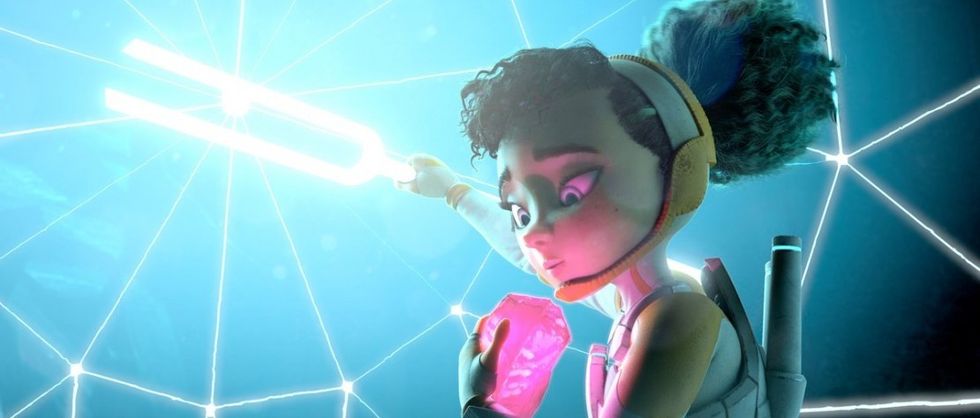
The directors took on an even further challenge than using a brand new system. "The first project we did was a full CGI film," Oldenburg explained. "With this one, we decided to shoot live action plates to show off the fidelity on purpose and then mix that with proper dashes of CG in there to make it really sing."
The creative team felt very strongly about embracing a harmony of old and new methods, though they laughed at how messy set building is in comparison to computers. "It was so messy, it was terrifying," Oldenburg joked, "It looked like a bunch of pre-schoolers had gotten together and made a craft."
"We couldn't test any of it at the studio, we had to trust that it was gonna work."
Working with Vision & Atmos took incredible faith
"We couldn't test any of it at the studio, we had to trust that it was gonna work," Fabian said. The team wasn't able to watch the project in Vision until they'd finished shooting. "There was a proper session once we had the film in the can, and we went and timed it and made sure everything was working right.
"At the time, there were very few of these projectors around to ship, so we didn't have one in our theater," Oldenburg added.
So the team just trusted. In fact, the Tribeca premiere was the first time any of them had seen the final project in both Atmos and Vision at the same time.
Imogen Heap brought technical prowess to the sound
Heap had been approached for the project by McGilpin, who knew she would be a perfect fit both creatively and on the technical side. She was immediately drawn to the prospect of working within the Atmos system.
"I couldn't wait to get my hands on the kit," Heap said. "I was hoping that I wouldn't have to mix it at home in my studio—that I would be able to actually somehow use the facility—and they went one further and brought the Dolby Atmos system into my barn."
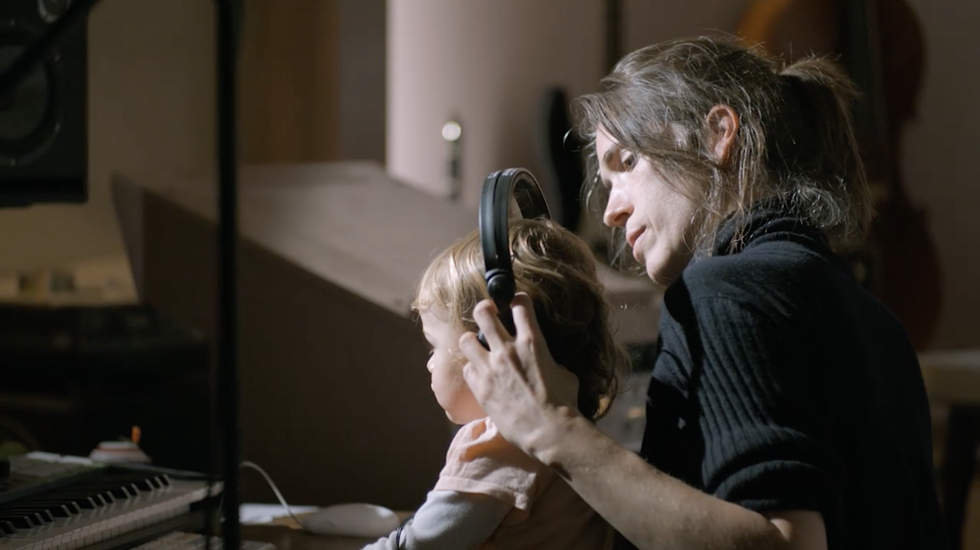
Dolby knew that Heap has had a long history in technological exploration. She won a Grammy for engineering in 2010, and has been working on haptic musical gloves for the past six years, which she used in the sound design of Escape. Kiser asked her to explain how the gloves came to be.
"Over the years I've been on lots of stage shows, and I would be flitting around between various bits of gear on stage trying to be frantically recording something over here, and then I'd go play something over there, and then try to record the drummer." Heap explained, "I had so many things to set up before the show. And eventually I just felt like, 'I wish I could somehow reach inside my computer, and instead of pressing a button to do a function-like bringing in more reverb or sampling something—I could engage with a gesture that feels more natural.'"
"One of the techniques we used is to re-time the sound effects so that they're actually rhythmically part of the song."
"So if I want to loop my voice, then I would literally just do this (waving) gesture, and I would loop my voice," she continued. "And I would let it go and I could pan it left and right. This idea of sculpting sound in thin air is the dream really. So there's a team of us now, we call ourselves the Mi.Mu Gloves Team." Though they're not quite ready for mass production, Heap said she feels that the gloves are at a point where she's "mainlining the song and really shaping sound as [she goes]."
There are satisfying confines when composing to picture
Composing music for a film was a first for Heap, but she loved it. "For me, in terms of the creative process, I see the monster as the blank canvas. It's the worst enemy because you just have nowhere to fall against. So I loved these confines, and found it really, really exciting to try to craft a song in something very locked."
"It's almost like you get a confirmation, that you don't get without the video." She continued, "When it works you can see it and feel it, whereas when you're just on your own in the studio, you have to have some extra confidence, which somehow the film gives you, which is a really nice cushion."
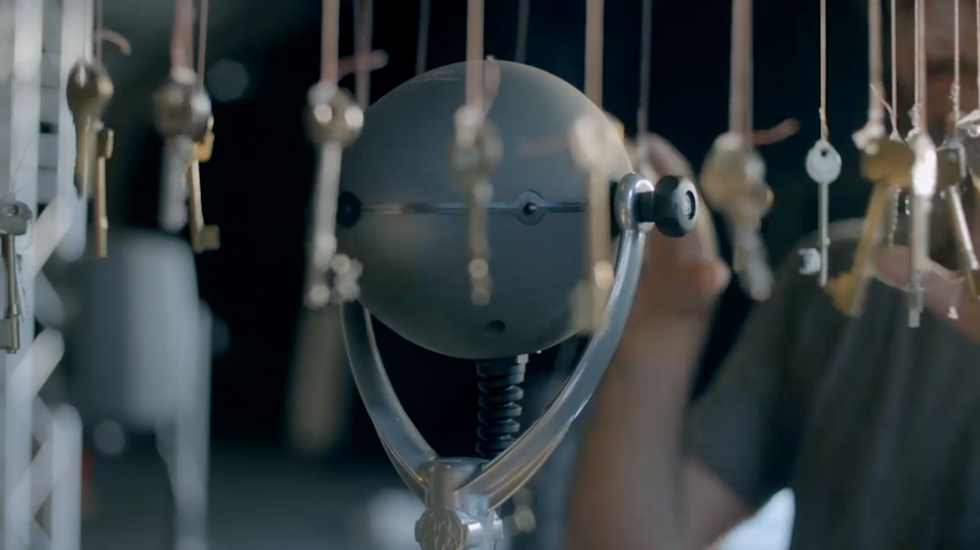
Materializing sound in a 3D sound-sphere
Another talent that Heap brought to the project was in the form of her sound designer, Nick Ryan. "Imogen said yes because she was interested, but she was smart enough to know that she wanted to not just compose a song for us, but to really control the whole sound experience," said McGilpin. Ryan is a longtime friend and collaborator of Heap's, and together they sculpted the entire sound-space of the film.
"One of the techniques we used is to re-time the sound effects so that they're actually rhythmically part of the song." Ryan began, "So if you look at tiny little details, like the twinkling of the crystals in the cave, or the crackle of the fire and the sparks that fly past the screen, they're all timed on tempo."
To create the sound of those twinkling crystals, Ryan used the house keys to every apartment he's ever lived in. Really.
There was an old BBQ in Heap's studio that he'd initially used to create the sound of the machine dropping. "But then, the lid of the BBQ is also a grill," Heap told the story. "Nick hung it from the ceiling, got all these keys, hung them from little threads, and put this holophone at the center."
"As a sound designer, I've got this particular interest in materializing sound." Ryan said. "Which is to say, making a scenario that for all intents and purposes is real. That's something you can do with sound because unlike an image, which we tend to see reduced into an imaginary plane, the recording is actually the same vibration that you would hear in a real life experience. So I think we were both interested in trying to almost put you on the terraformed planet for real."
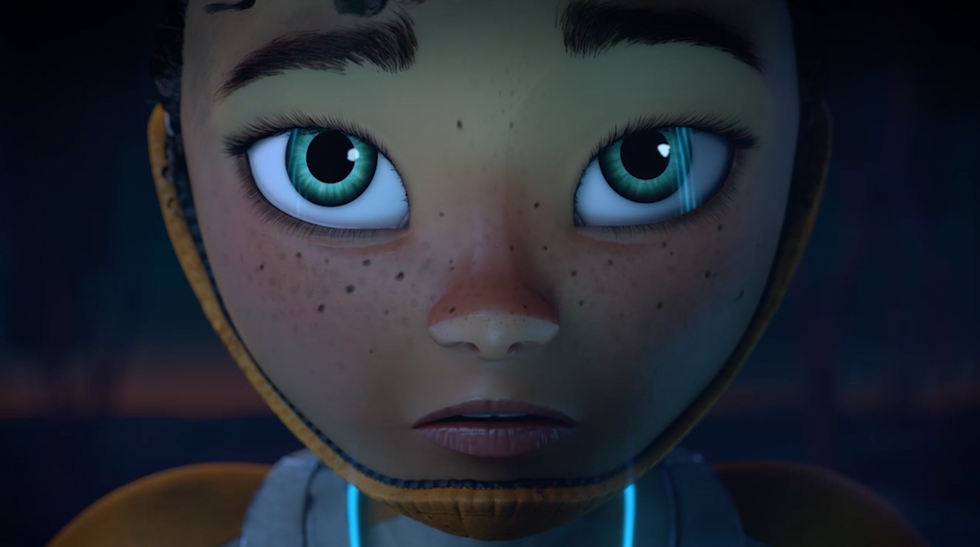
The future of art & the future of science intersect
Regarding the emergence of VR, Fabian said, "It's a perfect conversation to have; this idea of moviemaking or storytelling in another medium beyond the 2D picture, playing with the idea that you want to immerse someone and give them some agency."
The Moonbot duo feel that the Dolby technology will play strongly into enhancing the VR experience. "Limbert and I are now diving head first into what we thought was probably going to be a trend but it can't be ignored which is VR." Just as they have with their previous ventures, they intend to take the VR space to a higher level.
"The point of creation is all about inspiration to me."
Ryan reminded the audience that VR is really in its most nascent stage. "With the state of the art, whether that's Dolby Atmos or Virtual Reality, you tend to see early adopters using those platforms and technologies in quite an obvious way, to demonstrate or prove the concept. Although Escape is in places very dramatic, it also gives a chance to use Atmos quite subtly in places. And I think what we're beginning to see with VR and all these technologies, is storytellers beginning to use them in much more subtle ways. And that's when they become really interesting; they move from essentially tech demos into stories."
Oldenburg continued, musing on the interplay between art and science, "What's really important is that everybody that's a part of this is inspiring the other. I think about art in general, and how it's there to inspire science. You go back to George Méliès, Jules Verne, thinking through how to get to the moon. It's a completely crazy concept but then later, NASA does it. The point of creation is all about inspiration to me."
For more, see our complete coverage of the 2017 Tribeca Film Festival.











